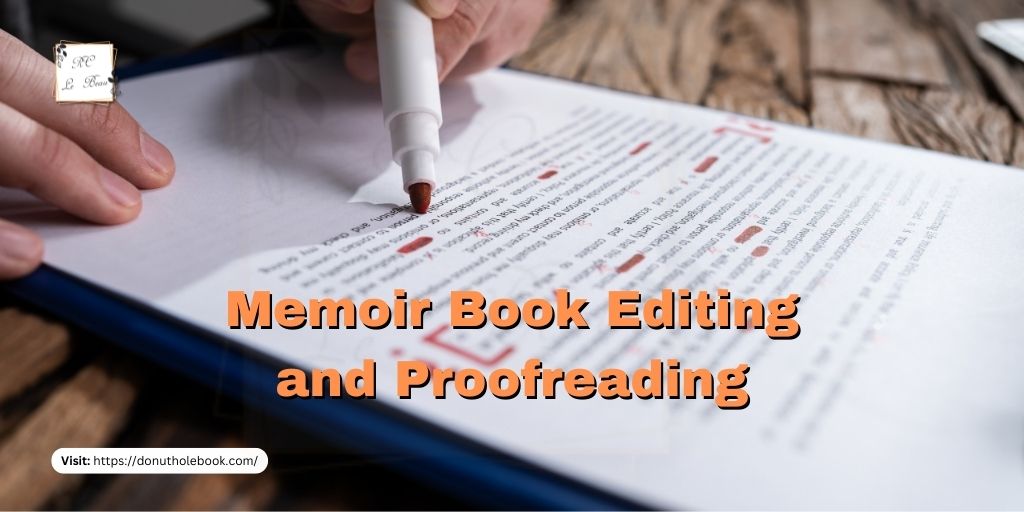Every person has a unique life story in the world. Some people share their true life stories with friends, telling them by mouth, and some people tell them in Memoir. Here I will tell you the best way to write a memoir. Read the memoir writing tips and spread your real-life story around the globe. Before getting into a deep dive, I want to tell you that you can read my last week’s published blog post about the difficulties of the Vietnam war.
Let’s start now…
What is a memoir?
A memoir is a work of nonfiction based on the author’s real-life recollections. You may confuse it with an autobiography. It somehow relates to that. In a memoir, the author shares his story from a single aspect or event, and the entire story revolves around that particular event. You can write a memoir on your life-changing events. You may not be sharing the story in chronological sequence like that of an autobiography, but they create dramatic effects by starting from wherever it makes the best sense to the reader. Here we will discuss the best way to write a memoir. So, let’s learn the details.
The Best Way to Write a Memoir:
Decide a Theme for Your Memoir
The best way to write a memoir is to base it on a specific theme. It depends on the primary event you want to share through it. So, the entire story moves toward one event and its aftereffects. The theme of the Memoir may not necessarily be sad. It can be lighthearted, sad, thoughtful, or despairing. Once you have made up your mind about the theme you will follow throughout the Memoir, choose the narrative in which you would write your book. To understand a narrative, you may relate it to the viewpoint and how the subject matter is directed.
Learning the difference between writing styles is crucial if you are writing a book for the first time. There are initially three writing narratives that are considered while drafting a manuscript.
First-person: I, We: when you tell the story from your perspective. Here writer and the main character of the story are the same. It is mainly used in autobiography.
Second person: You, Your perspective: There are very few books written in second person narrative, and these are primarily self-help books that create empathy with the reader so that they can understand the authors’ ideas more conveniently.
Third person narrative: He, She, They (Perspective). This is primarily used in fiction books where multiple stories are simultaneously moving ahead from multiple different characters’ perspectives. The historical nonfiction genre is also written in the third person narrative.
Build The Plot
Writing a story is a whole new journey besides having a remarkable story in your mind. When you decided to write a memoir, you would have a powerful story or special event in your mind that you would feature in your memoir. The best way to write a memoir begins with configuring the impactful order of those events in a compelling way that intrigues the readers.
To build a good plot:

- Decide on the number of characters you would include in your memoir.
- Decide on the main characters and supporting characters.
- Decide on where the story will start and when each character will enter the story.
Create Chapter Outlines
Writing a book requires you to sum up million little pieces from your journey and present them to readers in the most compelling way. The key is to know what you should tell first and what later, which is why a mind mapping of chapters is the best idea for writing an intriguing memoir. This way, you would have an outline of the entire book, and of course, you can make alterations to the story as you move forward with the chapter writing.
- Decide each chapter’s title and outline the events you would cover in it.
- Decide on the number of chapters the memoir would have.
- Review the whole structure of the story and decide if that is how you exactly want it to be. Else, make adjustments until you have the right story structure with you.
Proceed with Chapter Writing
Follow the chapter outline and begin your writing with the first chapter. The length of the chapter depends on the details provided and the number of events you cover. If you want to create a strong impression on the reader, never start the first chapter with the beginning of your story. Start from a suspenseful central point and then gradually move back to reveal parts of the true story so that the reader can enjoy connecting the dots and understand the story like he solved a riddle.
The secret to crafting the ever-living memoir:
Create an Emotional Journey

Memoirs share your personal experiences and the lesson you’ve learned from some life-altering events. Here, your writing style must convey your emotions at each stage. Memoirs are based on the writer’s life, so when you are writing your life story, ensure to tap into your own emotionality and deeply connect with your feelings. Only then would you be able to pen down those emotions hundreds of people can connect with.
Add Fictional Content
When you are writing a book while having a real-life event in your mind, you don’t remember every little detail of that moment. You just remember the main event and how it affected you. Although a memoir is a nonfiction book, many memoir writers do add fictional details to their content.
Open With a Dramatic Event
Always begin your story with a dramatic event. Even if you don’t resolve it quickly, just leave it there to capture the reader’s attention. People only listen to stories when it’s interesting til the end. So, learning how to write a memoir is essential; for that, you can take inspiration from a fiction story, although your account is nonfictional.
Define Characters and Events
The best way to write a memoir is to make ordinary moments memorable. You can add a back story to apparently everyday actions related to the characters and events. The more you emotionally connect them to your account, the more closely readers will connect to it.
Add Others’ Related Memories
When drafting notes about a particular scene, always remember to add details about family and friends and whatever their role is. Because in reality, family is something always present in our life; however, whatever role they play varies.
Editing and Proofreading

Chapter by chapter, as you complete your write-up, you move towards achieving your goal. Once all the chapters are finished, your draft turns into a manuscript. But don’t assume that your work has been done. The major part is still remaining- Proofreading and editing. Remember that book you have written in a month, taking a break at several stages. You may have rendered unnoticeable issues like the repetition of ideas, contradictory thoughts, and other grammatical problems. So, it always needs final proofreading to edit it one last time before publishing. It gives you an accurate impression of how the story would sound to the reader when he picks the book. So, wherever you think the story doesn’t make sense, you can make adjustments until the finest copy is ready.
Prepare Front Matter
Having a story isn’t sufficient to publish a book. If you want to publish your book, you must turn your manuscript into a book. For that, you need to prepare for the front matter. It includes:
- Title page
- Copyrights
- Dedication
- Acknowledgment
Book Formatting & Publishing
Once the front matter is ready, the final step is Book formatting; you can learn from google and format your book into an eBook/paperback and send it to the publishing house. You can get it done through online agencies as well.
A Closing Thought:
 In conclusion, writing a memoir is just like writing a book. You have your story with you that you want to portray. If you just follow these guidelines before writing, you can end up authoring an incredible book. If that’s not enough, you should read a memoir book, take inspiration, and understand how it has been written. The author RC LeBeau, being a marine tells his journey in the Vietnam war zone. His book Donut Hole is the best example of Memoirs. Place your order to read the whole story.
In conclusion, writing a memoir is just like writing a book. You have your story with you that you want to portray. If you just follow these guidelines before writing, you can end up authoring an incredible book. If that’s not enough, you should read a memoir book, take inspiration, and understand how it has been written. The author RC LeBeau, being a marine tells his journey in the Vietnam war zone. His book Donut Hole is the best example of Memoirs. Place your order to read the whole story.








